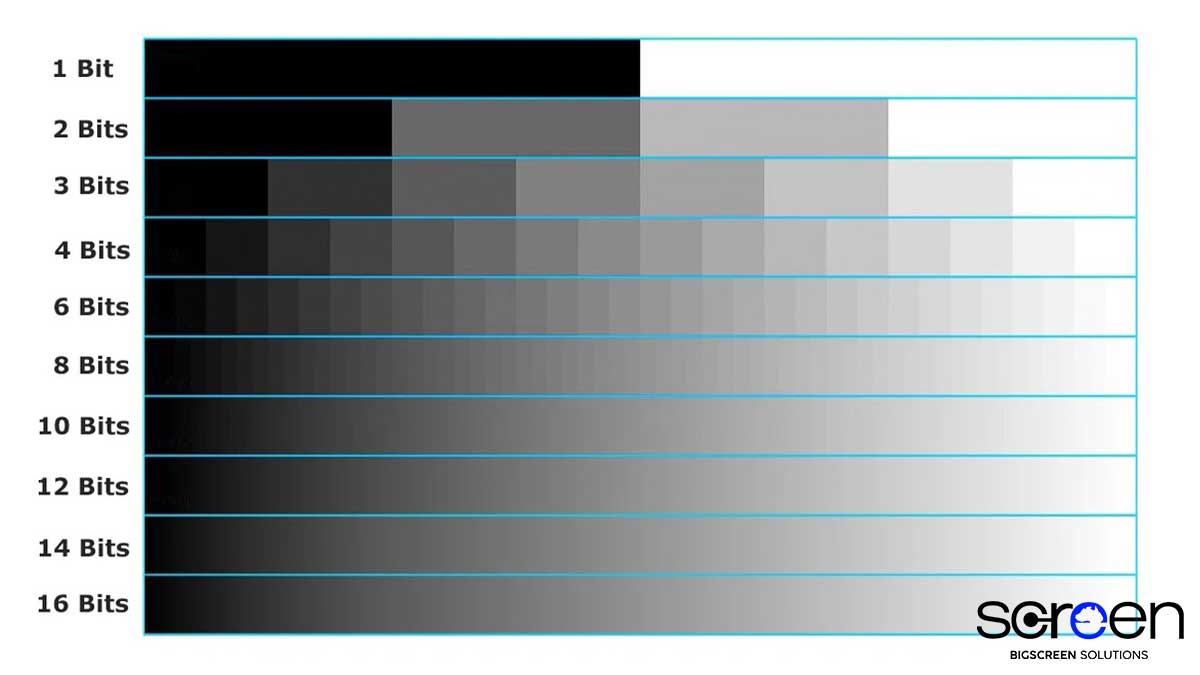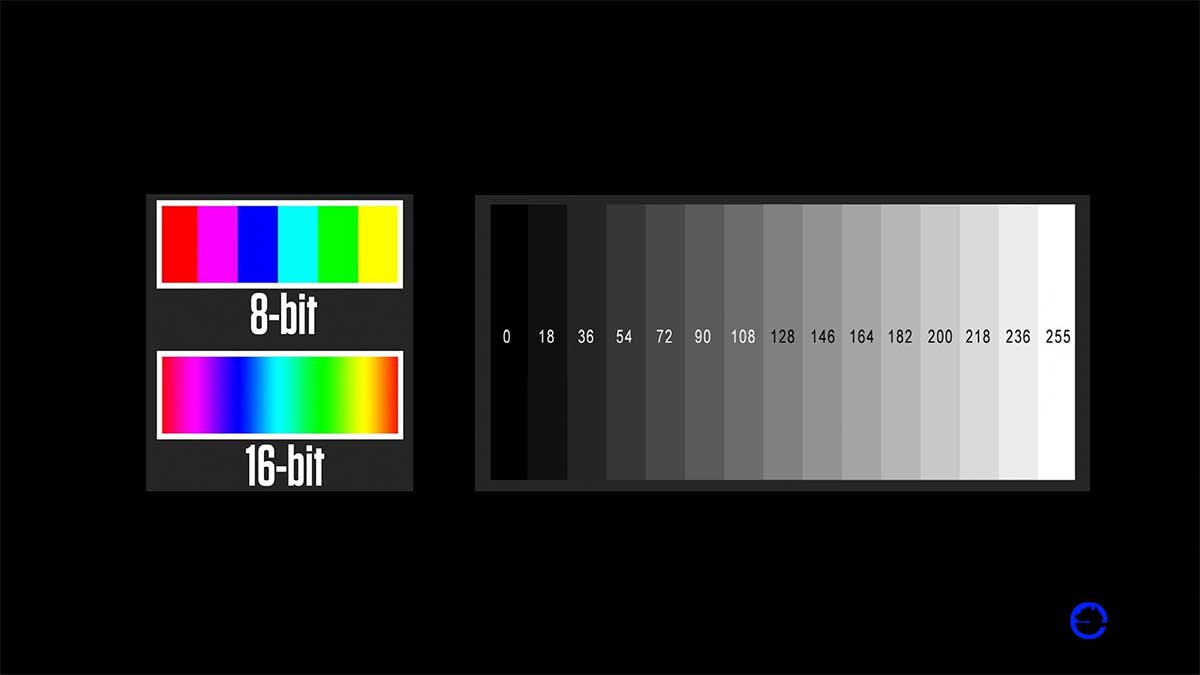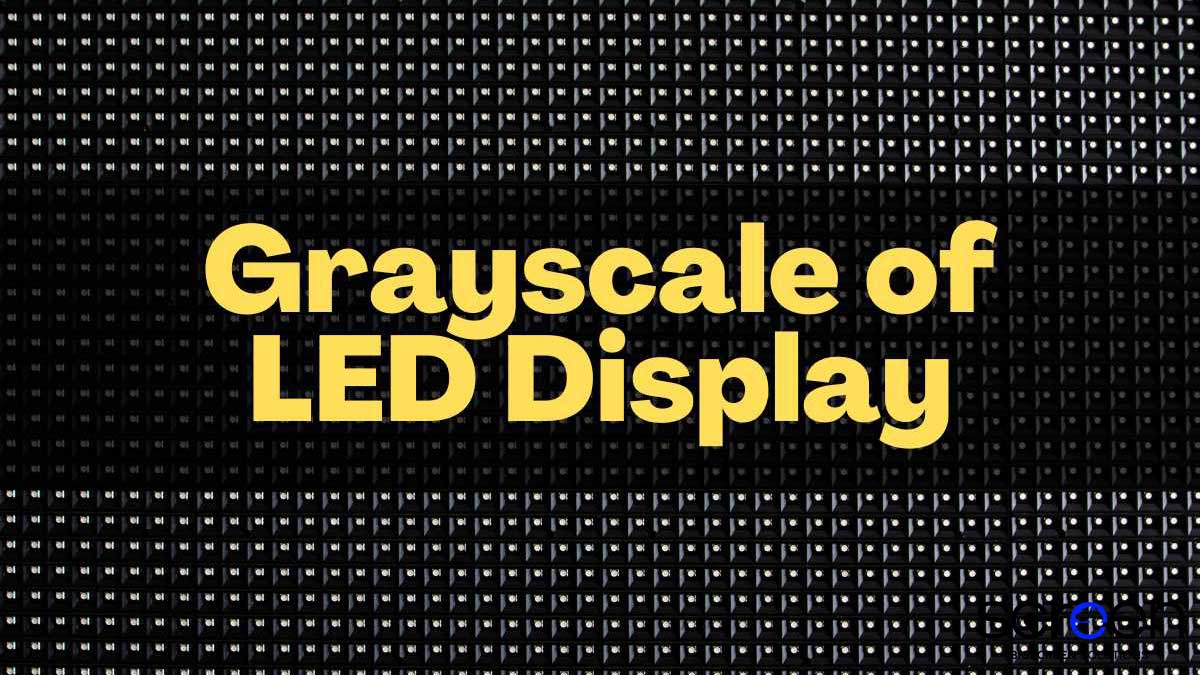In the world of digital displays, the concept of LED screen grayscale plays a pivotal role in determining visual clarity, color accuracy, and the overall image performance of LED screens. Whether you’re dealing with advertising billboards, stage backdrops, or retail signage, understanding grayscale can make or break the impact of your visual content.
This article offers a deep dive into the technical and practical aspects of LED screen grayscale, exploring how it works, why it matters, and what to consider when selecting a screen based on its grayscale capabilities. Along the way, we’ll also provide insights into bit depth in LED displays, compare related technologies, and help you make informed decisions for your next display investment.
What Is LED Screen Grayscale?

Grayscale, in simple terms, refers to the ability of a display to render shades between black and white. In LED screens, this is closely tied to how many levels of brightness each individual color can show. A screen with higher grayscale levels can display more subtle variations in shading, resulting in smoother gradients, more realistic images, and improved video playback.
In the context of LED screen grayscale, a display that can render 16-bit grayscale offers 65,536 levels of brightness per color, while a 14-bit display renders 16,384 levels. The higher the grayscale level, the better the image processing—particularly in low-brightness or dim-light environments where detail matters.
Why Is LED Screen Grayscale Important?
When LED screens display dynamic content like videos, brand visuals, or product demonstrations, grayscale controls how naturally shadows and lighting gradients appear. Poor grayscale means banding, pixelation, and a harsh viewing experience, especially for high-end applications like concerts, broadcast events, or luxury retail.
A practical example can be drawn from LED Sign installations used in boutique stores or hotels. A high grayscale level ensures that brand logos and intricate visuals don’t suffer from visual distortions or color bleeding, thus preserving the intended design aesthetics.
The Technical Side: How Does LED Screen Grayscale Work?
The grayscale capability of an LED screen is determined by the bit depth of its driving IC (integrated circuit). The bit depth describes how many brightness levels each pixel can show per color channel (Red, Green, and Blue). This brings us to our secondary keyword: bit depth in LED displays.
The formula for calculating grayscale levels is:
Grayscale Levels = 2^n (where n = bit depth)
For example:
- 8-bit = 256 levels
- 10-bit = 1,024 levels
- 14-bit = 16,384 levels
- 16-bit = 65,536 levels
So, when choosing a display, bit depth in LED displays directly affects image fluidity, especially for large-scale applications like sports arenas or film production.
Real-World Applications of LED Screen Grayscale
The impact of LED screen grayscale extends far beyond technical specifications—it plays a vital role in real-world applications where visual precision is non-negotiable. In broadcast studios, high grayscale levels ensure natural skin tones and seamless lighting transitions on camera. In medical imaging or simulation environments, subtle grayscale variations help display fine anatomical details or environmental nuances. For luxury retail and automotive showrooms, enhanced grayscale preserves brand integrity by delivering deep blacks and vibrant highlights, even under ambient lighting. From control rooms to digital art installations, the ability of an LED display to render smooth tonal gradients is essential to achieving clarity, emotion, and professional visual storytelling.
1. Stage Performances & Live Events
For concerts and shows, high dynamic range and grayscale are critical. Artists often use subtle lighting transitions, which can appear blocky or abrupt on low-grayscale screens. That’s why event managers often prefer to hire led screen panels with higher grayscale support to avoid this issue.
2. Corporate Presentations & Boardrooms
In professional settings, where visual clarity defines brand reputation, smooth grayscale ensures charts, presentations, and brand visuals are rendered professionally.
Interestingly, even a LED writing board—used in classrooms or interactive presentations—can benefit from high grayscale when it comes to displaying handwriting animations and gradients.
Comparing Grayscale Performance with Power Consumption
While grayscale is important for image quality, it’s also linked to power draw. Displays running at 16-bit grayscale will consume more power than those running at 8-bit, especially if brightness settings are maxed out. Balancing performance and efficiency is essential.
A helpful study titled A Power Consumption Comparison of LED Display Technologies showcases how different grayscale settings impact overall energy usage. When selecting a screen, factoring in power efficiency ensures you don’t compromise on sustainability for the sake of performance.
Choosing the Right Grayscale for Your Needs

Not all projects require the highest possible grayscale. Here’s how to decide:
| Application | Recommended Bit Depth | Reason |
|---|---|---|
| Indoor retail | 14-bit or higher | Smooth gradients & brand visuals |
| Outdoor advertising | 10–14-bit | Brightness prioritized |
| Stage events | 16-bit | Video accuracy at any brightness |
| Rental displays | 12–14-bit | Balance between cost and quality |
If you’re planning a temporary setup, it might be better to rent. As explained in The Benefits of Hiring an LED Screen, you can access high-quality grayscale displays without long-term costs.
How Grayscale Affects Color Accuracy
People often confuse grayscale with color depth, but they are interconnected. Grayscale helps LED screens render more accurate color tones by controlling brightness steps. Without adequate grayscale, even the most vibrant RGB values will appear uneven.
If you’re unsure how to approach this, check guides like How to Choose the Right LED Screen for Your Event?—they often discuss grayscale settings in the context of different lighting environments and content types.
LED Controller’s Role in Grayscale Rendering
One of the less-discussed factors is how LED controllers influence grayscale. Even with high-bit depth panels, if your controller doesn’t support those levels, the output won’t meet expectations.
Some advanced controllers come with built-in grayscale calibration, allowing you to fine-tune performance based on your environment. This is especially relevant in bit depth in LED displays since controllers can be the bottleneck or the amplifier of your screen’s potential.
Grayscale Testing and Calibration
Before committing to a screen, ask your vendor for a grayscale demo or test pattern. A professional demo should include:
- Black-to-white gradient ramps
- Shadow detail rendering
- Color transition gradients
This helps assess whether the claimed LED screen grayscale levels are actually being delivered. Calibration tools can also correct slight mismatches caused by temperature changes or prolonged usage.
The Future of Grayscale in LED Technology
As technology advances, more LED manufacturers are implementing AI-enhanced grayscale rendering, allowing for dynamic adjustments based on content. This not only enhances quality but reduces power draw in real-time.
AI-driven bit depth in LED displays may soon allow budget screens to compete with premium models in terms of visual performance. It’s an exciting space to watch, especially if you’re a business investing in long-term display infrastructure.
Conclusion
To sum up, LED screen grayscale is not just a technical detail—it’s the foundation of image quality in LED displays. It determines how smoothly your visuals transition, how clearly details appear, and how immersive your content feels.
When choosing a screen, pay close attention to bit depth in LED displays, controller compatibility, and energy performance. Whether you’re planning to purchase or temporarily hire led screen equipment, grayscale should be at the top of your checklist.
Understanding these aspects ensures your display doesn’t just light up—it tells a story, commands attention, and delivers a professional experience.



